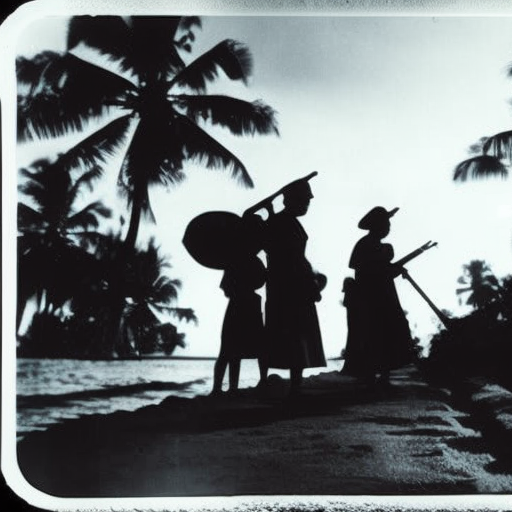Dutch East Indies Campaign: The Japanese Invasion of the Dutch East Indies
The Dutch East Indies campaign was a military campaign during World War II in which the Japanese Empire invaded and occupied the Dutch East Indies, present-day Indonesia. The campaign began on January 10, 1942, and ended with the Japanese victory on March 9, 1942.
Background:
The Dutch East Indies, a colony of the Netherlands, was a valuable resource-rich territory in Southeast Asia. It was known for its oil reserves, rubber plantations, and strategic location. The Japanese, seeking to secure resources and expand their empire, planned to invade the Dutch East Indies as part of their broader Pacific campaign.
Japanese Invasion:
The Japanese invasion of the Dutch East Indies began with air attacks on key targets, including airfields and naval bases. The Japanese forces quickly overwhelmed the Dutch and Allied defenses, utilizing their superior air power and naval capabilities. The Dutch and Allied forces were ill-prepared and lacked sufficient air support and naval strength to counter the Japanese offensive.
Land and Sea Battles:
The Japanese forces swiftly advanced through the Dutch East Indies, capturing major cities and key strategic locations. They encountered resistance from Dutch, British, Australian, and American forces, but the Japanese were able to overcome these oppositions due to their superior tactics and firepower. The Battle of Java Sea, fought between February 27 and March 1, 1942, resulted in a decisive Japanese victory, leading to the fall of Java, the last major Allied stronghold in the region.
Resistance and Surrender:
Despite the overwhelming Japanese advance, some Dutch and Allied forces continued to resist. Guerrilla warfare and small-scale engagements persisted in remote areas of the Dutch East Indies, but the overall outcome was inevitable. The Dutch East Indies surrendered to the Japanese on March 9, 1942, marking the end of the campaign.
Impact:
The Japanese occupation of the Dutch East Indies had significant consequences for the region. The occupation resulted in the loss of Dutch colonial rule and the establishment of the Japanese-sponsored Greater East Asia Co-Prosperity Sphere. The Japanese exploited the resources of the Dutch East Indies, particularly its oil reserves, to support their war effort. The occupation also led to widespread suffering and atrocities, including forced labor, internment camps, and the death of thousands of civilians and prisoners of war.
Legacy:
The Dutch East Indies campaign marked a turning point in the war in the Pacific. The Japanese victory in the campaign further expanded their control in Southeast Asia and threatened Allied positions in the region. The loss of the Dutch East Indies was a significant blow to the Allies and had far-reaching implications for the rest of the war.
Conclusion:
The Dutch East Indies campaign was a swift and successful military operation by the Japanese Empire, resulting in the occupation of the Dutch East Indies. The campaign highlighted the Japanese military’s superior tactics and firepower, as well as the lack of preparedness and resources of the Dutch and Allied forces. The occupation had profound consequences for the region, leading to the establishment of Japanese control and the suffering of the local population. The campaign also had broader implications for the war in the Pacific, further strengthening the Japanese position and challenging Allied efforts in the region.












